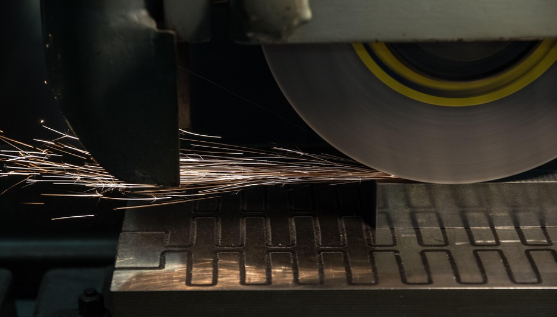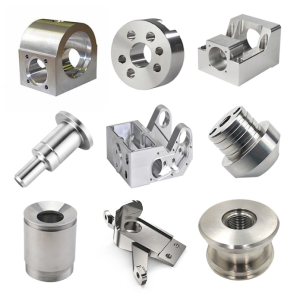Grinding is a highly precise material removal process that uses an abrasive wheel to shape or finish metal parts with exceptional accuracy. In this article, we will explore the grinding process, including its types, key specifications, and technical aspects, offering a comprehensive overview of how it works and its evolution in modern manufacturing.

What is Grinding?
Grinding is a machining process that involves removing material from a workpiece using an abrasive wheel. The wheel consists of abrasive particles that act as miniature cutting tools. As the wheel rotates over the workpiece, it removes a thin layer of material, resulting in fine finishes and precise dimensions. This method is particularly beneficial for processing hard materials, where other machining techniques may fall short.
Key components in the grinding process include the grinding machine, the workpiece, and the coolant used to reduce heat buildup during operation. Grinding can produce flat, cylindrical, or conical surfaces, making it versatile across various industries.
Historical Evolution of Grinding Technology
The history of grinding dates back to early human civilization when simple tools were manually sharpened using rotating stones. The evolution of grinding technology accelerated in the late 19th century with the advent of power-driven machines, which revolutionized the manufacturing process by increasing precision and efficiency.
The introduction of cylindrical grinders in the early 20th century marked another major milestone, enabling more accurate grinding of cylindrical surfaces. Modern grinding machines continue to incorporate advanced technologies like CNC (Computer Numerical Control), further enhancing the precision and automation of the process.
How Does the Grinding Process Work?
The grinding process involves the use of a rotating abrasive wheel to remove material from a workpiece. The wheel’s abrasive particles cut into the material, gradually achieving the desired shape and finish. The process can be broken down into several key steps:
- Selection of Grinding Wheel: The choice of the grinding wheel depends on the material being processed, the type of finish required, and the specific grinding operation.
- Machine Setup: The machine is adjusted for speed and feed rate to align with the grinding operation.
- Mounting the Workpiece: The workpiece is securely mounted on the machine to ensure stability during the grinding process.
- Grinding Operation: The grinding wheel comes into contact with the workpiece, removing material in a controlled manner.
- Coolant Application: Coolant is applied to dissipate heat, preventing thermal damage to the workpiece.
- Inspection: After grinding, the workpiece is inspected for accuracy, and any necessary secondary operations are performed.
Machines and Equipment Used in Grinding
Grinding operations require specific machines and tools:
- Grinding Machines: These include surface grinders, cylindrical grinders, and centerless grinders, each suited to different grinding tasks.
- Abrasive Wheels: The wheels are selected based on the workpiece material and finish requirements.
- Coolants: These are necessary for controlling the temperature during grinding.
- Workholding Devices: These tools securely hold the workpiece in place during operation.
- Dressers: Used to maintain the shape and sharpness of the grinding wheel.
- Safety Equipment: Essential for ensuring operator safety during grinding.
Common Types of Grinding Machines:
| Type of Grinder | Description | Use Case |
|---|---|---|
| Surface Grinder | Used for flat surfaces | Achieving fine finishes on flat surfaces |
| Cylindrical Grinder | Used for cylindrical surfaces | Grinding rods, shafts, and tubes |
| Centerless Grinder | No fixture is needed to hold the workpiece | High-volume production of cylindrical parts |
Technical Specifications in Grinding
Understanding the key technical aspects of grinding helps optimize the process for improved efficiency and precision:
- Grinding Wheel Selection: The type of wheel depends on the material being ground. For example, aluminum oxide wheels are commonly used for steel, while silicon carbide wheels are ideal for cast iron.
- Wheel Speed: Higher speeds generally result in faster material removal, but can increase the risk of thermal damage.
- Workpiece Speed: The speed at which the workpiece moves in relation to the grinding wheel affects the surface finish and accuracy.
- Feed Rate: The feed rate influences the material removal rate and surface quality.
- Coolant Application: Coolants reduce heat generation, prolonging the life of both the grinding wheel and workpiece.
- Dressing of Grinding Wheels: Regular dressing ensures that the wheel maintains its effectiveness and sharpness, improving grinding performance.
Types of Grinding Processes
The grinding process includes various techniques, each suitable for different applications:
- Surface Grinding: Involves grinding the flat surface of a workpiece. It’s ideal for achieving smooth, precise finishes on metal surfaces.
- Common Use: Sharpening tools, flat surface finishes.
- Cylindrical Grinding: Used for grinding cylindrical parts such as shafts and rods.
- Common Use: Finishing cylindrical parts and achieving tight tolerances.
- Centerless Grinding: A unique process where the workpiece is supported by a blade, not held by centers.
- Common Use: High-volume production of cylindrical parts.
- Internal Grinding: Focuses on the internal surfaces of components such as bores and holes.
- Common Use: Grinding internal bores and cylinders.
- Creep-Feed Grinding: Unlike conventional grinding, this method cuts deeper into the material in one pass.
- Common Use: Aerospace alloys and complex shapes.
- Tool and Cutter Grinding: Specializes in sharpening and producing cutting tools.
- Common Use: Sharpening end mills, drills, and other cutting tools.
- Gear Grinding: Precision grinding for finishing gears, ensuring high surface quality.
- Common Use: Manufacturing high-precision gears for automotive and aerospace industries.
- Thread Grinding: Creates threads on fasteners with exceptional precision.
- Common Use: Manufacturing threads for screws, nuts, and other fasteners.
Conclusion
Grinding is an essential part of modern manufacturing, offering high precision and fine finishes that are critical across various industries. Understanding the process, selecting the right equipment, and mastering the techniques allow manufacturers to meet demanding requirements and ensure the highest quality output.
By exploring its history, technical specifications, and different types of grinding processes, manufacturers can optimize their grinding operations for efficiency and quality, improving the overall productivity of their machining processes.


